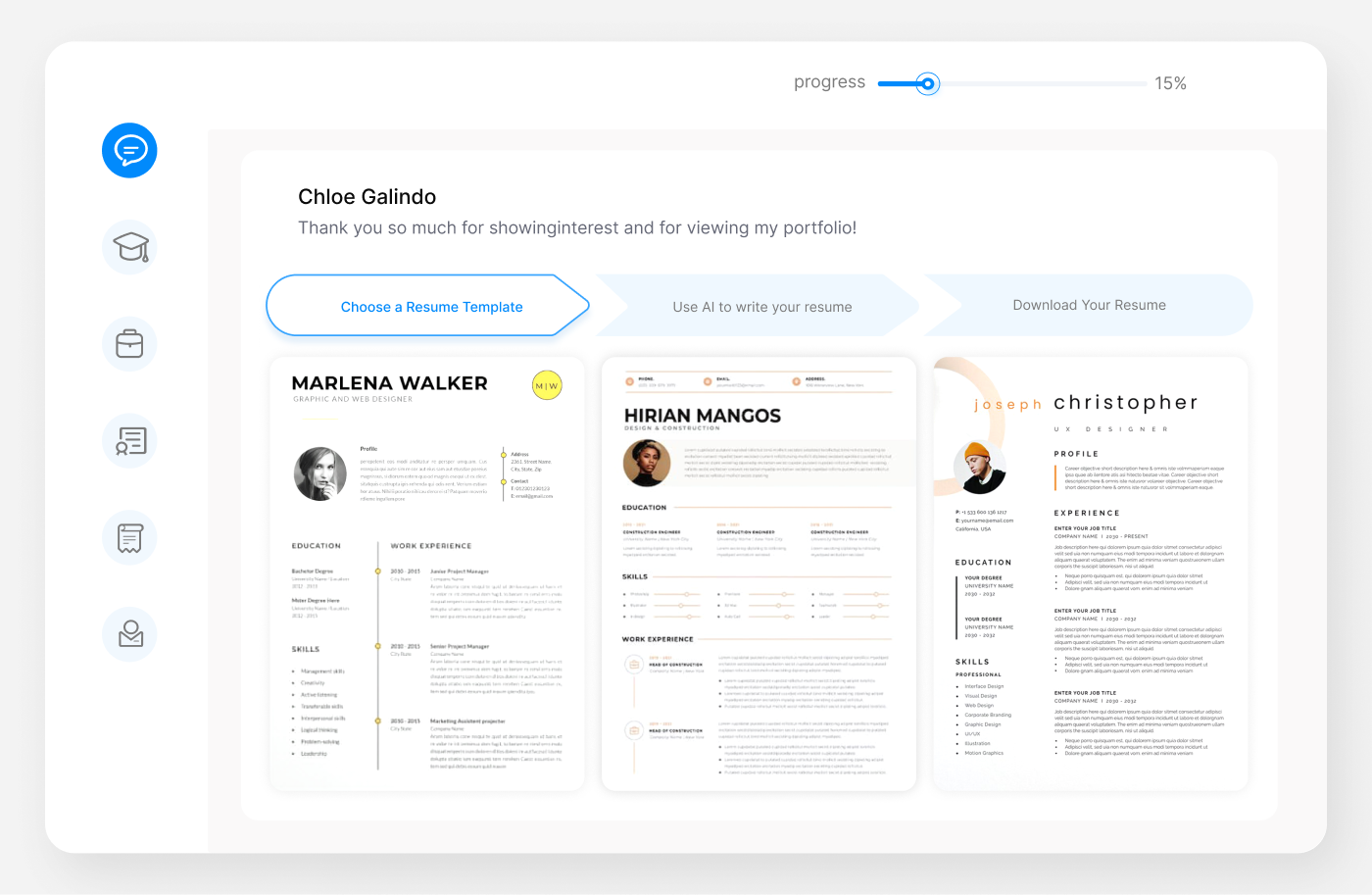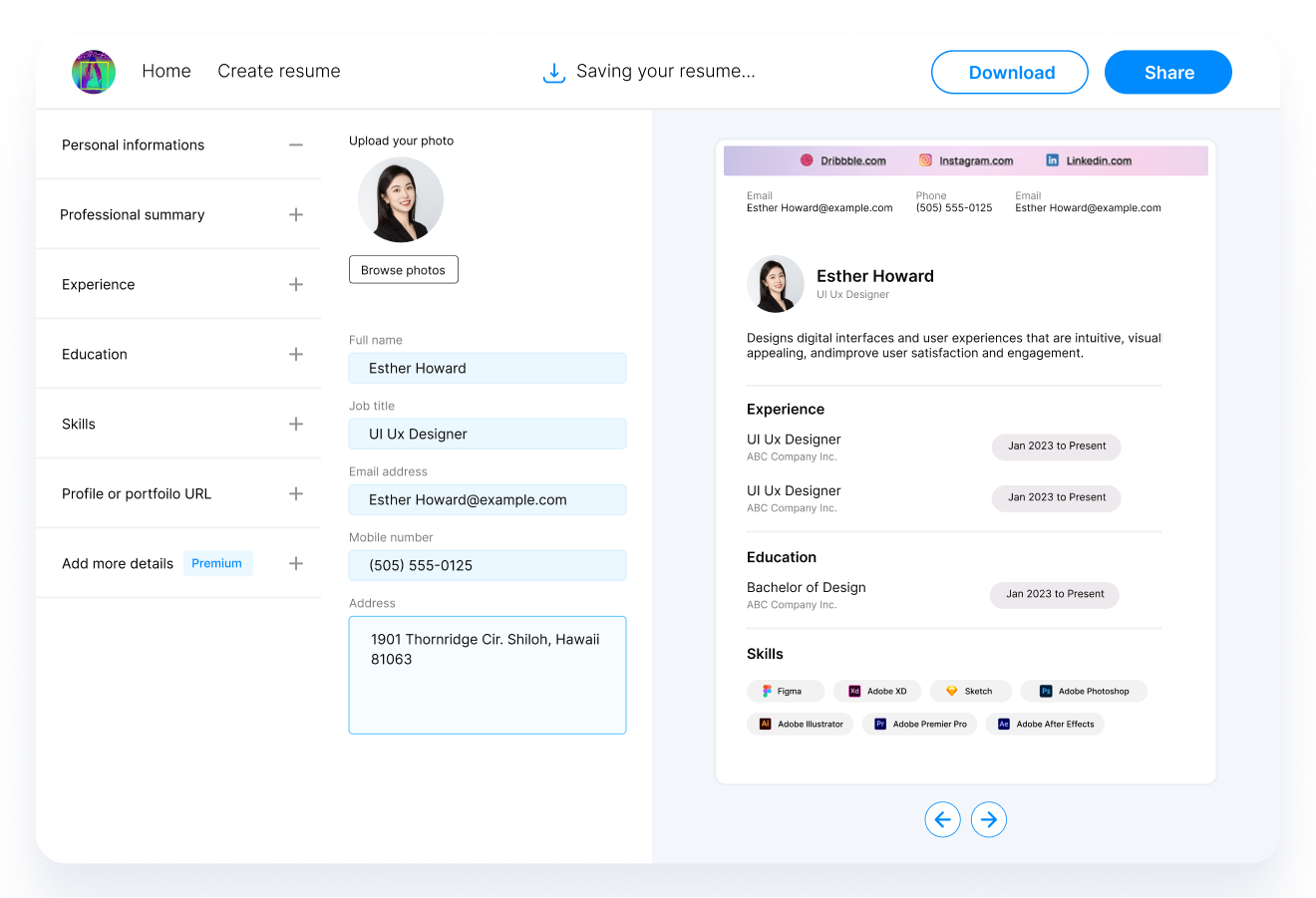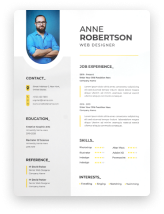The Importance of Work Experience in Your Resume
Your work experience is the heartbeat of your resume. It's not just a list of jobs you've held; it's a narrative of your professional journey. This section tells potential employers what you've accomplished, the skills you've honed, and the challenges you've overcome. In a competitive job market, your work experience can set you apart, showing employers not just where you've been, but also hinting at where you can take their company.

Understanding the Basics
What is Work Experience and Why it Matters
Work experience encompasses the jobs, internships, volunteer work, and freelance projects that form your professional background. It's a record of your journey through different roles, organizations, and industries. This section is critical because it gives employers a glimpse into your practical application of skills, adaptability to different environments, and your career trajectory.
The Role of Work Experience in Job Hunting
In the realm of job hunting, your work experience is your arsenal. It's proof of your ability to apply your knowledge and skills in real-world scenarios. Employers scrutinize this section to understand your professional growth, assess your role suitability, and predict your potential contribution to their organization.
Section 2: Preparing Your Information
Before diving into the actual resume writing, gathering and organizing your work experience is crucial. This preparation ensures that you have all the necessary information at your fingertips, making the resume crafting process smoother and more effective.
Gathering and Organizing Your Work Experience
Start by compiling a comprehensive list of your past jobs, including part-time positions, internships, volunteer roles, and freelance projects. For each role, note down the company name, your job title, and the duration of employment. It's also helpful to recall and note specific projects or tasks you were involved in, particularly those that demonstrate skills relevant to the job you're applying for.
Identifying Key Achievements and Responsibilities
Once you have your work history laid out, the next step is to sift through your roles and identify key achievements and responsibilities. Think about the impact you made in each role: Did you increase sales? Streamline a process? Lead a successful project? These accomplishments are your selling points and should be highlighted in your resume.
Section 3: Structuring Work Experience on a Resume
The way you structure the work experience on your resume can significantly influence its effectiveness. Your goal is to present your background in a manner that is easy to read and highlights your strengths.
Chronological vs. Functional Resumes: Pros and Cons
A chronological resume lists your work experience in reverse order, starting with your most recent job. This format is straightforward and favored by many recruiters as it clearly shows your career progression.
On the other hand, a functional resume focuses more on skills and achievements rather than the chronology of your employment. This type is beneficial if you have gaps in your employment or are changing careers.
How to Order Your Work Experience Effectively (Including Reverse-Chronological Order)
In most cases, the reverse-chronological order is the best way to present your work experience. It allows potential employers to see your most recent and relevant experiences first. Start with your current or most recent job and work backward.
Ensuring Legibility and Clarity in Job Descriptions
When detailing your work experience, clarity and legibility are key. Use clear, concise language and bullet points to make the information easy to digest. Avoid large blocks of text, as they can be daunting and difficult to skim through for busy recruiters.
Incorrect Example:
Long paragraphs describing job responsibilities and achievements.
Correct Example:
Concise bullet points highlighting key responsibilities and achievements.
Section 4: Writing Compelling Job Descriptions
Crafting compelling job descriptions is an art that can significantly boost the impact of your resume. The way you describe your past roles can either engage the recruiter or lose their interest.
Crafting Impactful Job Titles
Your job title should immediately convey the level and nature of your position. If your official title is obscure or doesn't accurately reflect your role, consider using a more commonly understood equivalent. However, ensure it truthfully represents your responsibilities.
Describing Your Role and Responsibilities
When detailing your role, focus on responsibilities that align with the job you're applying for. Describe your tasks and duties in a way that demonstrates your skills and value to a potential employer. Use action verbs to make your experiences more dynamic.
Incorporating action verbs like 'managed', 'developed', or 'streamlined' can make your responsibilities sound more proactive and impactful.
Highlighting Achievements and Milestones (Including "Key Achievement" Subsection)
In addition to responsibilities, highlighting your achievements and milestones is crucial. This section should include your most impressive accomplishments, ideally quantified with data or specific examples.
Here is an example of a well-written achievement in a marketing resume
"Led a digital marketing campaign that increased online sales by 25% over six months, significantly expanding the customer base."
Using Bullet Points for Clear Job Description Bullets
Bullet points are your friend when it comes to clarity and readability. They help break down information into digestible pieces, making it easier for recruiters to scan through your resume and pick out key information.
Section 5: Tailoring Experience to the Job
A one-size-fits-all resume is a thing of the past. Tailoring your experience to the job you're applying for is crucial in today's job market.
Analyzing Job Descriptions for Key Skills and Requirements
Start by thoroughly analyzing the job description of the position you're interested in. Identify the key skills and requirements listed by the employer and reflect these in your resume, particularly in your work experience section.
Customizing Work Experience for Different Industries
If you're applying across different industries, customize your work experience to highlight the most relevant skills and achievements for each sector. This shows potential employers that you have done your homework and understand what's important in their industry.
Section 6: Addressing Common Challenges
Navigating through the common challenges in resume writing, especially concerning work experience, is crucial for crafting a resume that stands out.
How to Handle Employment Gaps
Employment gaps are not uncommon, but they need to be addressed strategically in your resume. Be prepared to explain these gaps during interviews. If possible, fill these periods with relevant activities like volunteering, studying, or freelance work.
Dealing with Short-Term Roles and Freelancing
For short-term roles, freelancing, or frequent job changes, focus on the continuity of skills and experiences rather than the duration of each role. Grouping short-term positions under a common heading like "Freelance Work" or "Contract Positions" can provide a cleaner, more organized look.
Presenting Unrelated Work Experience
When including unrelated work experience, highlight transferable skills that can be relevant to the job you're aiming for. Skills like leadership, communication, and project management are valuable in almost every field.
Section 7: Formatting and Design Tips
A well-formatted resume enhances readability and makes a good first impression. Here are some tips to ensure your resume's format adds to its effectiveness.
Choosing the Right Resume Format
Select a resume format that best showcases your strengths. For a solid work history, a chronological format works well. For those with gaps or changing careers, a functional or combination format may be more appropriate.
Balancing Text and White Space
Ensure there's enough white space on your resume to make it easy on the eyes. Adequate spacing, bullet points, and clear section headings help in making the resume more readable.
Making the Work Experience Section Heading Stand Out
Use bold or slightly larger fonts for section headings like 'Work Experience' to make them stand out. This helps guide the reader's eyes to the most important sections of your resume.
Correct Placement of the Work Experience Section
For most professionals, the work experience section should come right after the introduction or summary. However, for new graduates, placing education before work experience might be more beneficial.
Section 8: Advanced Strategies
To further enhance your resume, consider incorporating these advanced strategies. They can significantly elevate your resume's impact, especially in competitive job markets.
Incorporating Keywords for Applicant Tracking Systems
Many companies use Applicant Tracking Systems (ATS) to screen resumes before they reach human eyes. To pass through ATS filters, include relevant keywords from the job description in your resume. This includes skills, job titles, and other industry-specific terms.
Demonstrating Career Progression
Clearly show your career progression in your resume. This can be done by listing your positions in reverse-chronological order and highlighting promotions or increases in responsibilities in your job descriptions.
Connecting Experience with Future Goals
Link your past experiences with your future career goals. This shows potential employers that the role they offer aligns with your career trajectory and that you are a forward-thinking candidate.
Measuring Job Performance for Hard-to-Quantify Jobs
For jobs where performance is hard to quantify, focus on impact and influence. Describe scenarios where your actions led to positive changes, improvements in processes, or successful project completions.
Section 9: Examples and Templates
Providing examples and templates can help you better understand how to apply these tips in real-world scenarios.
Sample Resumes with Effective Work Experience Sections
Consider including a few sample resumes that demonstrate effective use of work experience sections. These samples can serve as a reference for structuring and wording your resume.
Template for a Chronological Resume
Offer a template for a chronological resume, highlighting how to list work experience in reverse order, emphasizing career growth and development.
Template for a Functional Resume
Also, provide a template for a functional resume, focusing on skills and achievements rather than the chronological order of jobs. This is particularly useful for those with gaps in employment or a diverse career background.
Section 10: Finalizing Your Resume
After crafting your resume, it's important to refine and finalize it to ensure it's ready to make a great impression.
Proofreading and Editing Tips
Thoroughly proofread your resume for grammar, punctuation, and spelling errors. Also, ensure that the formatting is consistent throughout the document. Reading the resume aloud or having someone else review it can help catch errors you might have missed.
Seeking Feedback from Professionals
Getting feedback from professionals in your field or career counselors can provide valuable insights into how your resume might be perceived in your industry. They can offer advice on content, format, and even specific wording.

Conclusion
Key Takeaways for Showcasing Work Experience
- Tailor your work experience to the job you're applying for.
- Use clear, concise language and bullet points for readability.
- Highlight achievements with quantifiable evidence.
- Format your resume to enhance its readability and impact.
The Continuous Process of Resume Improvement
Remember, resume writing is a continuous process. As your career evolves, so should your resume. Regularly updating and tailoring it to specific job applications can greatly increase your chances of landing your dream job.
Recommended Reading






